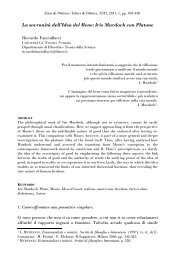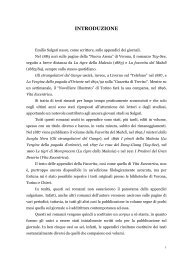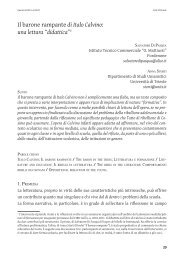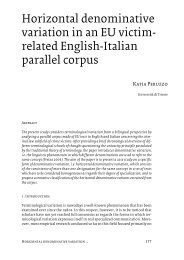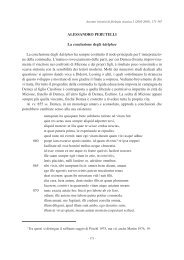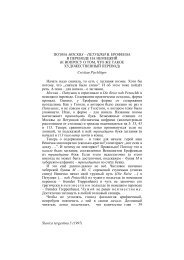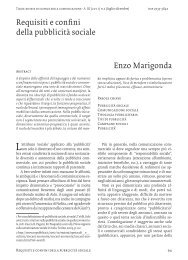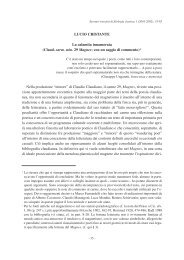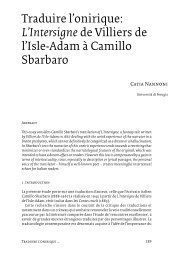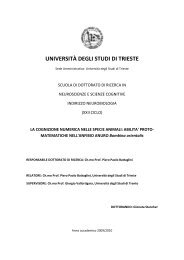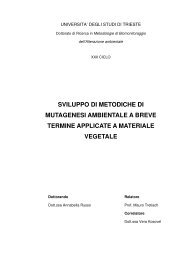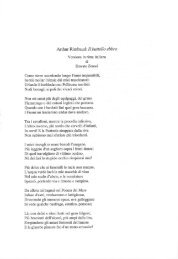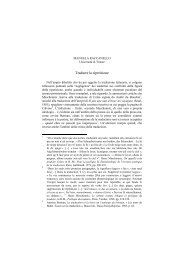UNIVERSITÀ DEGLI STUDI DI TRIESTE - OpenstarTs - Università ...
UNIVERSITÀ DEGLI STUDI DI TRIESTE - OpenstarTs - Università ...
UNIVERSITÀ DEGLI STUDI DI TRIESTE - OpenstarTs - Università ...
Create successful ePaper yourself
Turn your PDF publications into a flip-book with our unique Google optimized e-Paper software.
Chapter 3 – The pulmonary function laboratory<br />
Figure 3.4 Typical system configuration for the measurement of rebreathing pulmonary diffusing capacity.<br />
As the patient rebreathes the gas mixture in the bag, a modified mass spectrometer<br />
continuously analyzes it during both inspiration and expiration. During this rebreathing<br />
procedure, the carbon monoxide disappears from the patient-bag system; the rate at which this<br />
occurs is a function of the lung diffusing capacity. The helium is inert and insoluble in lung<br />
tissue and blood and equilibrates quickly in unobstructed patients, indicating the dilution level<br />
of the test gas. Acetylene, on the other hand, is soluble in blood and is used to determine the<br />
blood flow through the pulmonary capillaries. Carbon monoxide is bound very tightly to<br />
hemoglobin and is used to obtain diffusing capacity at a constant pressure gradient across the<br />
alveolar-capillary membrane. Decreased lung diffusing capacity can occur from the<br />
thickening of the alveolar membrane or the capillary membrane as well as the presence of<br />
interstitial fluid from edema. All these abnormalities increase the barrier thickness and cause a<br />
decrease in diffusing capacity. In addition, a characteristic of specific lung diseases is<br />
impaired lung diffusing capacity. For example, fibrotic lung tissue exhibits a decreased<br />
permeability to gas transfer, whereas pulmonary emphysema results in the loss of diffusion<br />
surface area.<br />
41



